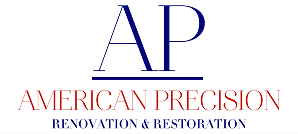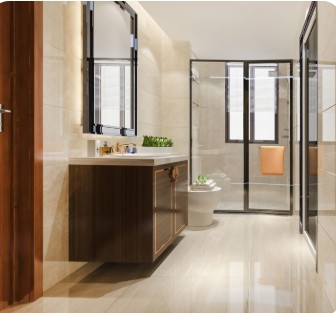Bathroom remodeling continues to evolve with new materials, technologies, and design philosophies that prioritize both function and aesthetics. This year’s trends reflect a growing emphasis on wellness, sustainability, and personalized spaces that serve as retreats from daily stress. From bold color choices to smart technology integration, these trends are reshaping how we think about bathroom design.
1. Natural Stone Takes Center Stage
Natural stone has become the material of choice for bathroom remodeling projects seeking timeless elegance. Marble, granite, and quartzite are appearing not just on countertops but as shower surrounds, accent walls, and even flooring. The appeal lies in the material’s ability to create a spa-like atmosphere while offering durability that lasts for decades.
Book-matched stone installations, where slabs are opened like a book to create mirror-image patterns, have gained popularity for creating stunning focal points. These installations work particularly well behind floating vanities or as shower feature walls.
Honed finishes are preferred over polished surfaces for their slip resistance and softer appearance. This finish choice reduces maintenance requirements while maintaining the natural beauty of stone materials.
2. Freestanding Bathtubs as Focal Points
The freestanding bathtub has moved beyond luxury bathrooms to become a centerpiece in bathroom remodeling projects of all sizes. Modern designs range from sleek contemporary shapes to classic clawfoot styles, allowing homeowners to express personal style while creating a relaxation zone.
Placement strategies have evolved beyond traditional wall positions. Island installations in larger bathrooms create dramatic visual impact, while corner placements maximize space efficiency in smaller rooms. The key is ensuring proper floor support and plumbing access during the remodeling process.
Material choices have expanded beyond traditional cast iron and acrylic. Stone resin composites offer the appearance of natural materials with lighter weight and improved insulation properties. These materials retain heat longer, extending soaking time and comfort.
3. Smart Technology Integration
Smart toilets with heated seats, automatic lids, and integrated bidets are becoming standard features in high-end bathroom remodeling projects. These fixtures offer improved hygiene and comfort while reducing toilet paper usage and environmental impact.
Digital shower systems allow precise temperature control and custom user profiles. Multiple users can save their preferred settings, including temperature, flow rate, and duration. Some systems include aromatherapy and chromotherapy features for a complete sensory experience.
Smart mirrors with integrated lighting, defogging capabilities, and even television displays are completely changing daily routines. These mirrors can display weather information, news updates, or calendar appointments while providing optimal lighting for grooming tasks.
4. Bold Wallpaper & Statement Walls
Wallpaper has returned to bathroom spaces in a big way, with moisture-resistant options that can withstand humid conditions. Geometric patterns, tropical motifs, and abstract designs add personality to spaces that were previously limited to paint colors.
Removable wallpaper options allow for easier updates and rental-friendly installations. These products have improved significantly in quality and appearance, making them viable alternatives to traditional wallpaper.
Statement walls using wallpaper create focal points without overwhelming smaller spaces. Powder rooms are particularly well-suited for bold wallpaper choices since the space is used for shorter periods.
5. Mixed Metal Finishes
The one-metal rule has been abandoned in favor of mixed finishes that add visual interest and prevent spaces from feeling too matchy. Popular combinations include warm brass with cool chrome or black fixtures paired with brushed gold accents.
The key to successful mixed metal implementation is maintaining consistent ratios and strategic placement. Typically, one metal serves as the dominant finish while others provide accent touches through hardware, lighting, or decorative elements.
Plumbing fixture manufacturers now offer coordinated collections that include multiple finish options designed to work together, making it easier to achieve a cohesive mixed-metal look.
6. Walk-In Showers with Curbless Entry
Curbless shower entries create smooth transitions that improve accessibility and visual flow. These designs eliminate tripping hazards while making spaces appear larger and more open. Proper drainage and waterproofing are essential for successful curbless installations.
Linear drain systems have largely replaced traditional center drains for curbless showers. These drains can be positioned along walls or integrated into the floor design, allowing for single-slope construction that’s easier to waterproof.
Glass panels are becoming larger and more minimal, with some installations using single sheets of glass for unobstructed views. These panels require structural support and professional installation but create stunning visual results.
7. Floating Vanities & Open Storage
Floating vanities create the illusion of more space while providing easier floor cleaning access. These installations work well in both contemporary and traditional bathroom remodeling projects when styled appropriately.
Open shelving provides storage while maintaining visual lightness. Popular applications include floating shelves beside vanities, recessed wall niches in showers, and built-in storage benches.
The combination of closed and open storage creates functional flexibility while maintaining clean lines. Lower cabinets hide everyday items while open shelves display decorative objects and frequently used items.
8. Biophilic Design Elements
Bringing nature indoors through plants, natural materials, and organic shapes has become a major trend in bathroom remodeling. Living plants thrive in bathroom humidity when proper lighting is provided, creating natural air purification systems.
Wood elements, either real or wood-look materials, add warmth to spaces dominated by hard surfaces. Teak shower accessories, bamboo storage solutions, and wood-look tile all contribute to biophilic design goals.
Natural lighting is prioritized through larger windows, skylights, or solar tubes. When natural light isn’t available, full-spectrum LED lighting mimics natural illumination patterns throughout the day.
9. Dark & Moody Color Palettes
Deep, rich colors have replaced the all-white bathroom trend. Navy blues, forest greens, and charcoal grays create sophisticated, cocoon-like atmospheres that feel intimate and luxurious.
These darker colors work particularly well in powder rooms and master bathrooms where mood lighting can be controlled. The key is balancing dark colors with adequate lighting and reflective surfaces.
Accent walls in dark colors provide drama without overwhelming smaller spaces. This approach allows experimentation with bold colors while maintaining brightness through other surfaces.
10. Heated Floors & Towel Warmers
Radiant floor heating has become more accessible and affordable, making it a popular addition to bathroom remodeling projects. Electric systems are easier to install than hydronic systems and provide consistent, comfortable heat.
Towel warmers serve both functional and luxury purposes, providing warm towels while helping to dry the bathroom air. Wall-mounted and freestanding options accommodate different layout requirements and style preferences.
Timer controls and smart home integration allow these comfort features to operate automatically, warming floors before morning routines and ensuring towels are warm when needed. These trends reflect a shift toward bathrooms that serve as personal retreats while incorporating practical improvements that support daily routines. Successful bathroom remodeling projects often incorporate several of these trends while maintaining focus on the homeowner’s specific needs and preferences. The goal is creating spaces that feel current and personal while providing long-term functionality and value.

